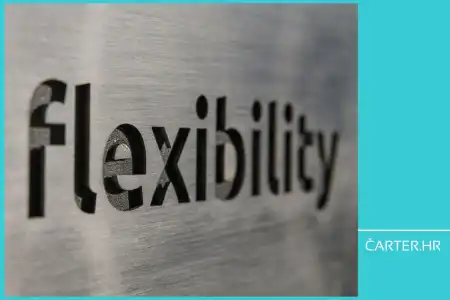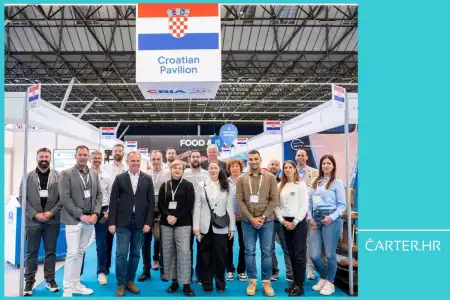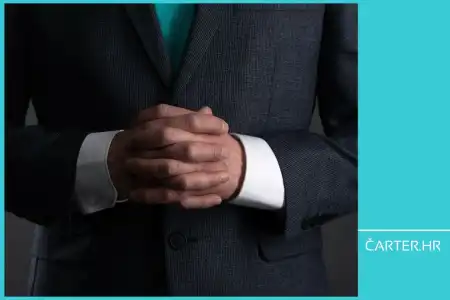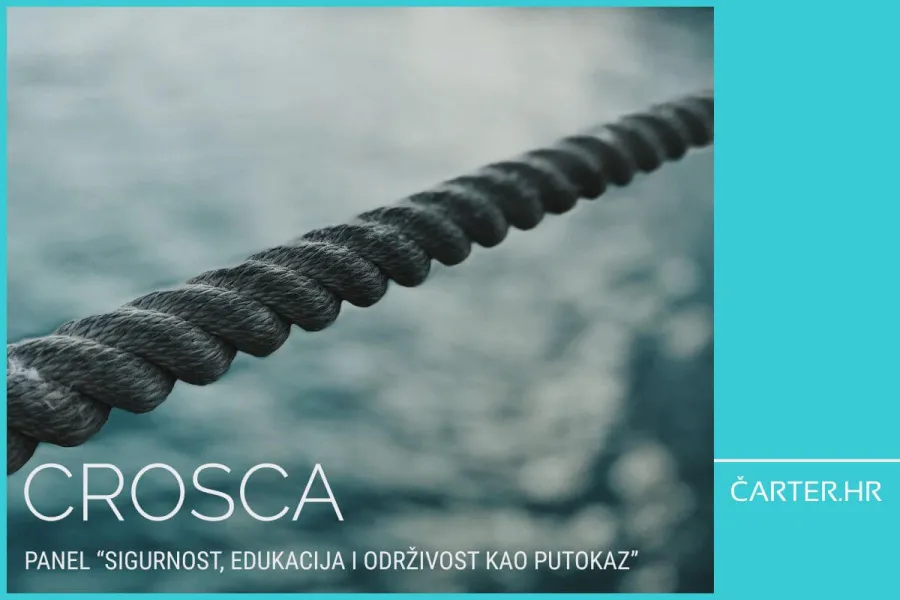
- 23.10.2025.
- News
Are Croatian regulations keeping up with the realities at sea? Who truly protects the Adriatic, and under what rules? As part of the Biograd Boat Show, the CROSCA Association brought together experts, captains, and industry representatives to openly discuss real-world problems and first-hand solutions.
As part of this year’s Biograd Boat Show, on October 22, 2025, the Croatian Skipper and Crew Association (CROSCA) held a panel discussion titled “Safety, education and sustainability as a roadmap.”
The panel took place from 16:00 to 18:00 at the Captain’s Club and brought together leading figures in ecology, education and the charter industry - but unfortunately not the invited representatives from ministries and maritime authorities.
The panel featured:
- Vicko Ozretić, President of the CROSCA Association
- Paško Klisović, President of the Nautical Tourism Association at the Croatian Chamber of Economy (HGK)
- Katarina Barić, Representative of the maritime training institution “Adria Libar”
- Matko Bašić, Director of the Wastewater Collection Sector at CIAN
- Silvana Radovanović, Croatian Red Cross, Head of the Water Rescue and Coastal Environmental Protection Service
- Ornela Krezić, Greensail Manager
- Matea Špika, Representative of the Sunce Association
- Captain Mate Bedrica
- Captain Frano Brate
- Captain Andrija Fustin
- Captain Ivor Županić, also a member of the emergency rescue team for difficult sea conditions at the Croatian Red Cross
The panel was moderated by Sandra Barčot, a well - known maritime journalist and editor.
The panel addressed five key topics that demand dialogue not only between institutions and professionals, but also between practice and regulation.
Below is an overview of the panel, which was divided into five sections, and a summary of the topics discussed.
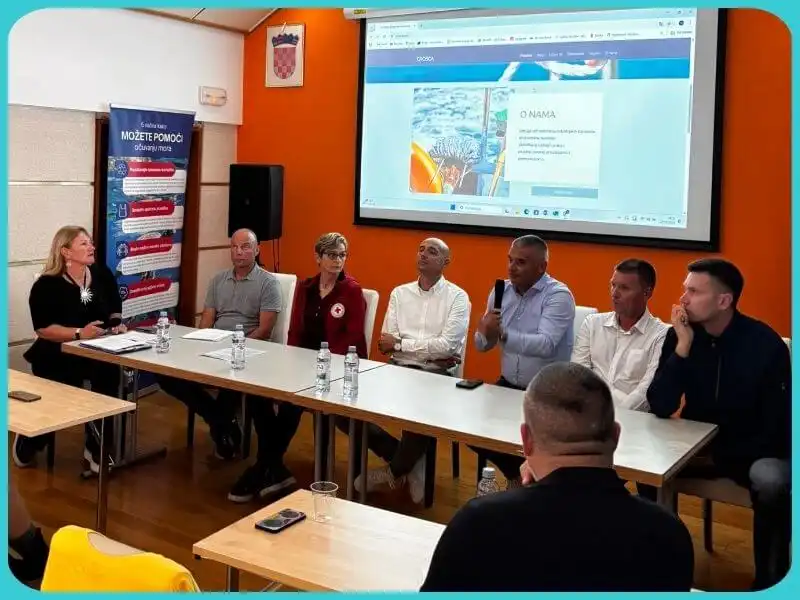
1. Safety at sea – article 53, paragraph 7 of the Safety regulation
The first to speak on the panel were Silvana Radovanović from the Croatian Red Cross Rescue Service, Paško Klisović, President of the Nautical Tourism Association at the Croatian Chamber of Economy, captains Mate Bedrica, Frano Brate, Andrija Fustin, and Ivor Županić, as well as Vicko Ozretić, President of the CROSCA Association and the organizer of this panel.
The discussion focused on the Safety Regulation which, according to CROSCA, is incomplete and unclear, as well as on the behavior and reactions of local residents toward anchoring vessels and yachts near the coast. The captains agreed on one thing – they respect the anchoring rules and ensure both the safety of their vessels and the seabed. However, the problem lies with local residents who, in a way, claim ownership over the coastline near their houses and apartments, often calling the Harbor Master’s Office to report yachts they are commanding, usually without any real grounds.
The captains described various situations they have faced over years of sailing and mentioned that in other Mediterranean countries, such as Turkey, the rules on anchoring and mooring vessels are much clearer. They also shared both pleasant and unpleasant experiences with navigation and mooring in Croatian territorial waters, as well as experiences with anchoring and mooring in other European Union countries.
Vicko Ozretić commented that Article 53, Paragraph 7 of the Safety Regulation is not well defined and should be amended to reflect the actual situation at sea. He said: “We have already submitted a proposal that is sustainable, realistic, and feasible. We took the time and effort to draft the amendment and correction to Article 53 to make it effective. But we received a response that it was not accepted.”
In conclusion, it was agreed that local residents also need to be educated, as they often contact the Harbor Master’s Office without knowing exactly what is permitted in terms of anchoring, how it should be done, and at what distance from the shore.
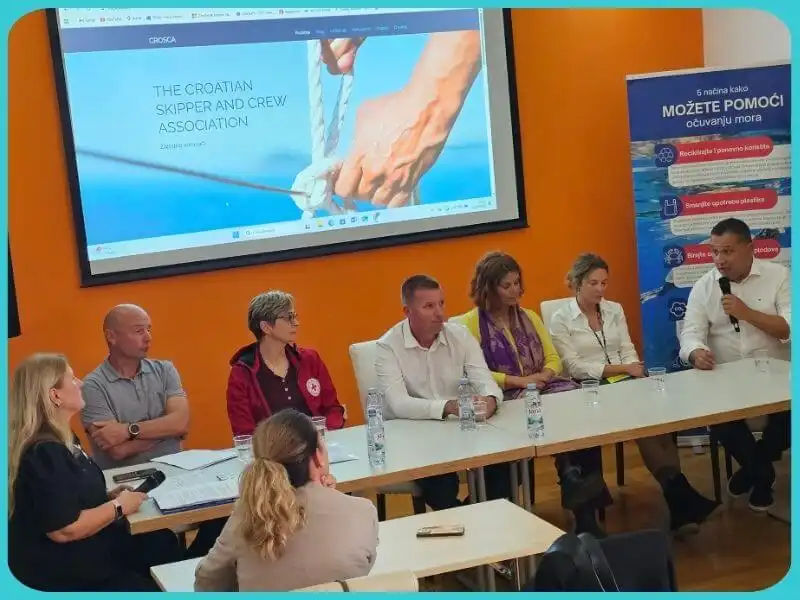
2. Environmental protection – black and grey tanks, posidonia
The second topic featured Matea Špika from the Sunce Association, Ornela Krezić from Green Sail, and Matko Bašić, Director of the company CIAN.
The panel moderator, Sandra Barčot, raised the question of black water tank regulations and marine pollution, where participants stated that a solution has been sought for years. For the past 15 years, letters have been sent to ministries, but without any real or concrete changes. The state has established rules and regulations, but it is up to captains and skippers whether they will comply with the regulations on discharging tanks into the sea and similar matters.
When asked where kitchen waste and oil from guests on board end up, Ornela Krezić from Green Sail replied: “Most of it ends up in the sea. Part of the city sewage also ends up in the sea, creating enormous pressure, and we are not the only country with this problem. Data shows that only 27% of all global wastewater is properly treated.”
She also said that more education is needed, both among the general public and among charter employees, emphasizing that we must protect our Croatian waters.
Since the issue of wastewater collection at sea is not defined, and since we all live from or by the sea, Vicko Ozretić commented on what can be done or improved: “Yachts have been placed on the pillar of shame, and yachts and captains are being blamed. We have had situations where the captain and crew were accused of being at fault, even though they had nothing to do with the incident. Yachts are the ‘black sheep’ of nautical tourism and the Adriatic, and while we’re on that subject – how many Croatian islands are connected to sewage systems, and how many discharge directly into the sea?”
It was proposed that every yacht of a certain tonnage should have devices for separating wastewater, since not all have the same capacities. Small yachts, for example, can hold wastewater for a maximum of one or two days, and they cannot comply with the current rule that states no wastewater from vessels may be discharged into the Adriatic. It was concluded that clear legal frameworks must be established for the safe collection of wastewater from vessels, in marinas, and similar facilities. For now, achieving “zero percent discharge” into the sea is still impossible.
Matko Barić described the challenges his business faces and mentioned Monaco as an example of good practice: “That port is a ‘zero percent discharge’ port, and the fines they impose for violations are enormous. They have multiple options for handling vessel waste and water, from barges to trucks and direct discharge into the sewage system.”
Ornela Krezić added: “All these issues we’re talking about can actually be solved very easily, through digitalization, i.e., monitoring, GPS, and similar tools.”
On this topic, Matea Špika from the Sunce Association stated: “Citizens report pollution, but Harbor Master’s Offices do not respond, there are too few of them, and they lack vessels. What is needed is the use of monitoring. The numbers show that large ships are not the problem, as their number in the Adriatic is very small.”
The panel discussion also touched on the topic of Posidonia, the “guardian of the Adriatic,” and the efforts to preserve it and prevent the devastation of the Adriatic seabed and marine life. “Everyone cares about the cleanliness and clarity of the Adriatic Sea, and Posidonia is precisely what is responsible for that. But in the past 20 years, we have witnessed the devastation and destruction of Posidonia meadows along the entire coast.”
As a step forward, a mooring plan similar to that adopted by Split - Dalmatia County is expected. A plan was proposed that became part of the county’s spatial plan, defining locations for ecological anchorages.
However, skippers and captains believe that this spatial plan aims to introduce concrete blocks and anchoring fees wherever possible. “I repeat, what concerns us is that vessels are getting bigger, and these blocks and everything being dumped into the sea do not meet safety standards, especially for larger yachts.” “It seems that profit is the priority, and everything else is secondary,” concluded Vicko Ozretić in this part of the panel.
He called for clear marking and definition of the Posidonia fields, as captains would be the first to respect them.
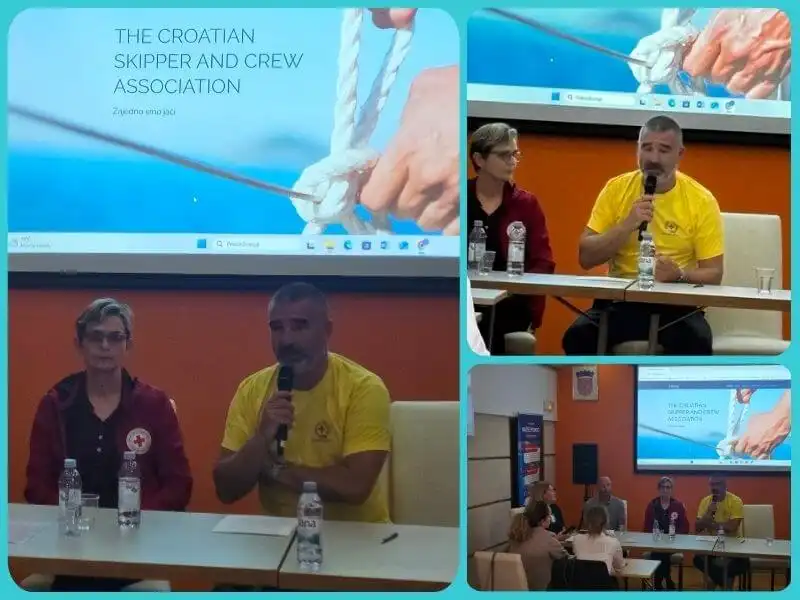
3. Skippers as guardians of the Adriatic
Silvana Radovanović, Croatian Red Cross (CRC), Head of the Water Rescue and Coastal Environmental Protection Service, and Ivor Županić, this time as a member of the CRC's rescue team for challenging sea conditions, explained how the topic “Skippers as guardians of the Adriatic” came about - triggered by a rescue operation of a man from an island that lasted 8.5 hours.
“We are all very proud that Croatia is among the leaders in the global charter industry and nautical tourism, and that safety is at the highest level. But in order to even attempt an intervention, we at CROSCA and CRC want to encourage our member skippers and direct them toward taking a course and certification for professional rescuers. That way, in their daily work, they could offer greater safety both to the crew and to guests on board,” said Ivor Županić.
He also said that rescue boats are understaffed. That is why these boats are practically not operational - a rescue boat should not have only two crew members with 72-hour shifts.
When asked whether it is possible to have a registry of all those trained for search and rescue at sea, of all skippers who would be part of the sea rescue service and the Croatian Red Cross, Silvana Radovanović responded:
“That is an excellent idea, and I actually learned many interesting things at this panel - some of them for the first time. In the spirit of this regulation and law, the CRC is an international organization, but the new law and the safety regulation do not even mention the word ‘safety.’ For example, safety on beaches depends on the goodwill of the concessionaire or the manager of that beach. We are fighting hard for our rescuers to become members of Search and Rescue teams.”
“Our entire story about safety ultimately depends on people’s goodwill and volunteers, but it is essential to have laws that support all this, and then everything would be much, much better.”
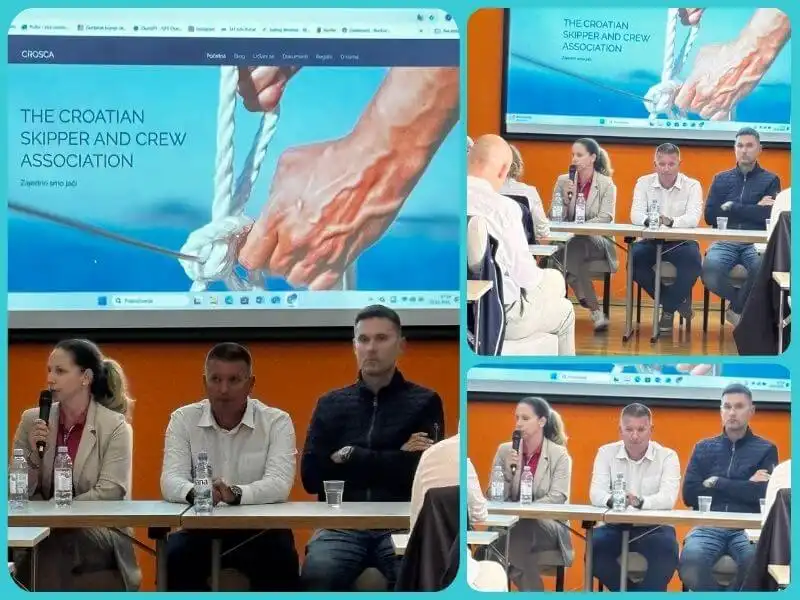
4. Maritime certificates – where are we and why are we behind
In this part of the panel, comments on the topic were provided by Katarina Barić, representative of the maritime training center “Adria Libar,” and captains Andrija Fustin and Mate Bedrica.
Katarina Barić thanked the CROSCA Association for once again inviting her to participate and, in response to the question of why Croatia is not competitive in maritime training, stated:
“We have excellent programs, and it’s no coincidence that the Adria Libar training center is here, because we have 35 years of experience in education, and we are approved by the Ministry of the Sea, Transport and Infrastructure and operate under international standards. But is the Croatian yacht master and skipper competitive? Yes, if they choose to pursue education. But currently, the regulations do not require it. Much of it is left to the personal responsibility of each individual.”
The training center tried to initiate changes in many ways, including through a working group, where they proposed aligning Croatian yacht master certificates with international standards. In other words, a yacht master should not be able to claim, after a 25 - day course, that they are qualified to operate a 500 gross ton yacht - without holding a number of additional certificates, such as medical aid, fire safety, emergency procedures, and so on, which is why our certificates are not recognized abroad."
"When nothing could be achieved with our own ministry - due to unresolved procedures and bureaucracy - the training center and the working group turned to the Belgian ministry, because we wanted our seafarers to be competitive on the labor market. And believe it or not, with a short procedure in which we proved the competence of our instructors, we very quickly and easily received approval as a Croatian training center to offer our Croatian captains an alternative within Croatia. And yes, it sounds absurd, but we resolved the problem in part."
To this, Captain Andrija Fustin said:
“A person qualified for navigation - if truly qualified - will be worth the insurance, and then the property entrusted to that person for management at any given moment will be safe. And you don’t get that from a 7 - day course.”
On the comment that lack of practical training is actually the biggest issue, Captain Mate Bedrica said:
“There’s definitely a lack of practical training, and things are somewhat backwards. Even in driving school, there is more emphasis on practice than on theory. People need practice from the very start, but clearly we have an inverted system. For example, in nautical licensing, the B license for operating vessels up to 12 meters - an entry - level license - is obtained solely by passing a theoretical exam at the harbor master’s office, without any practical knowledge. The first commercial license in Category C includes only minimal and insufficient practical experience, with six hours of hands - on sailing, and the exam ends with a practical test to see if these people are ready to operate a vessel. But clearly, these people want more practice and are aware of the need for it. And our laws do not require practical training - people seek it out on their own.”
It was commented that there is a need to distinguish between the ranks in the merchant navy and nautical tourism, meaning that secondary legislation and a new regulation on the issuance of certificates in nautical tourism are needed - signed by the minister. A working group is needed to determine how the programs align with the STCW tables applied to these types of maritime transport.
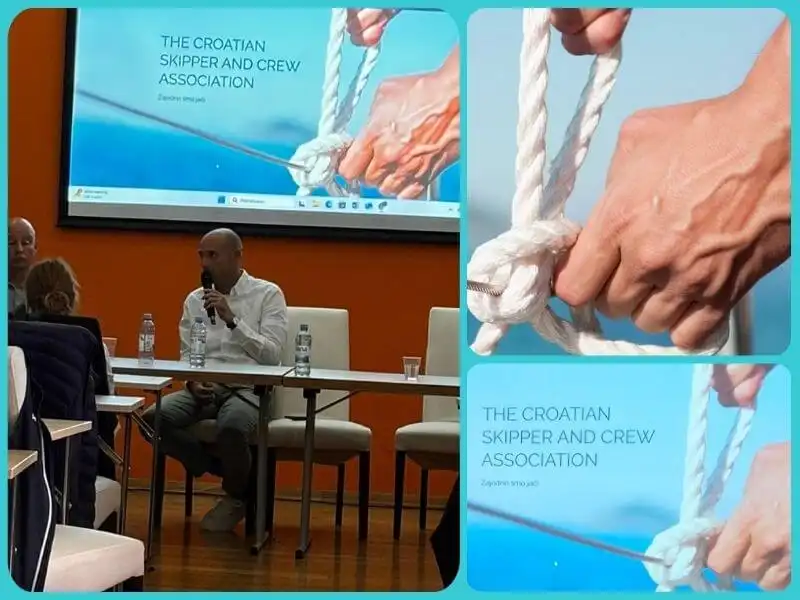
5. Minimum accommodation standards for crews
The final topic of the panel, concerning the accommodation and conditions in which crew members stay on vessels - especially in bareboat charters - sparked discussion and comments from the audience, as this is currently a fresh issue and a major problem for all skippers and hostesses.
Paško Klisović, President of the Nautical Tourism Association at the Croatian Chamber of Economy, spoke on this topic, addressing the unsatisfactory conditions of crew cabins and how yachts, when ordered, should be equipped with cabins that meet basic human standards, not minimal spaces that skippers refer to as “graves.”
“…in my 26 years of work I have never heard a skipper say they won’t sail on a boat because their cabin is too small, but still, the skipper’s cabin must have ventilation, must have a window. What will become a practical issue is having a private toilet, because most vessels are built with cabins that include a toilet. And the skipper will sleep in that small cabin, that ‘grave,’ and again the question is - how big is that cabin? Was it ordered with proper dimensions during the vessel’s construction or is it just a converted bow with a piece of plywood and a sponge? We want to set standards for that cabin the way they should be.”
The comments pointed toward the real need to regulate minimum accommodation conditions for skippers and hostesses by rulebook, and for that reason, a draft regulation has already been created. It was also noted that even the biggest problems and situations can be resolved through good and constructive communication, and everyone is welcome to submit their suggestions, additions, and comments.
The CROSCA panel opened important questions about real safety at sea, environmental responsibility, and the education of maritime professionals - not in theory, but in practice.
From safety and certification, through black water tanks to skipper cabins - the panel discussion revealed just how far apart practice and regulation still are.
The discussion showed just how much mismatch still exists between what the law prescribes and what actually happens at sea. And while captains, educators, and industry experts demonstrated willingness for cooperation and solutions, the question remains - where are those who should implement these solutions?
If we want an Adriatic that is safe, clean, and sustainable, dialogue must become a daily practice - not an exception. And it cannot happen only within the industry - it also requires the presence of institutions that too often are absent when they’re needed most.
Categories of trends
- News
- Sale
- Marketing
- SEO
- Web design
- Social media
- Technology
- Regulations
- Management
- Education
- Finances
- User experience
Newsletter
Sign up for the newsletter and receive the latest trends and tips straight to your inbox


